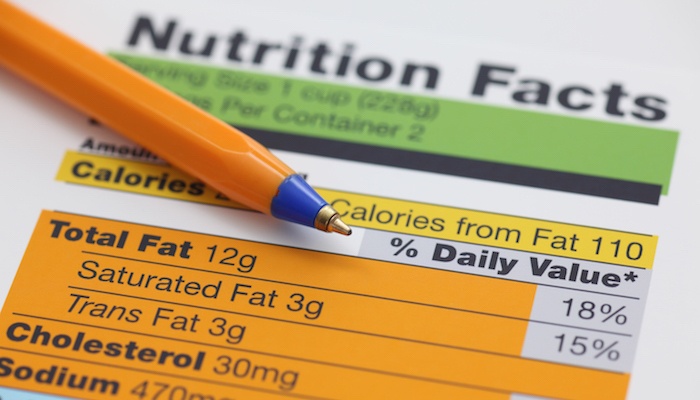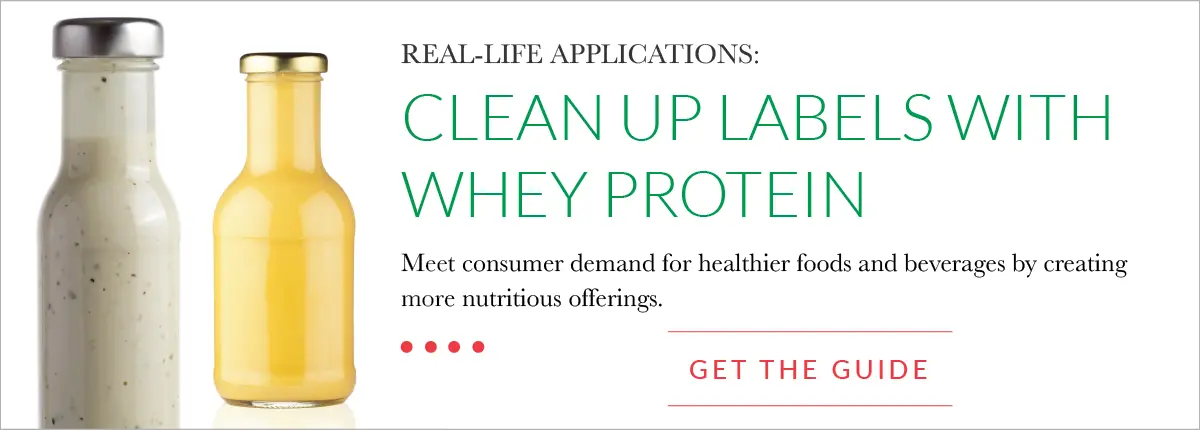 Clean label and ingredient transparency are everywhere, and many consumers use them interchangeably, despite significant differences. Both are major trends in the food and beverage industry, and both are in high demand by consumers. The Clean Label Project has made consumers more aware of what should be on ingredient lists and, just as importantly, what shouldn’t.
Clean label and ingredient transparency are everywhere, and many consumers use them interchangeably, despite significant differences. Both are major trends in the food and beverage industry, and both are in high demand by consumers. The Clean Label Project has made consumers more aware of what should be on ingredient lists and, just as importantly, what shouldn’t.
While the terms “clean label” and “label transparency” are similar, their differences can add to the confusion caused by today’s food labeling. Ironically, both terms are key for earning consumer trust.
To help clear things up, we’re here to explain the difference.
Clean label indicates a food or beverage product contains minimal ingredients that are natural, recognizable, and perceived as better-for-you.
Ingredient transparency goes a step further than clean labels, indicating where ingredients came from, whether they were ethically sourced, a company’s environmental impact and more.
What is Clean Label?
The clean label trend refers to food products containing natural, familiar, simple ingredients that are easy to recognize, understand and pronounce, with no artificial ingredients or synthetic chemicals.
Driving the trend are Millennials and Generation X who consider themselves “foodies,” but a growing number of Baby Boomers are joining the movement as well. Clean label consumers of all generations believe that products with natural ingredients or fewer ingredients — or foods with other attributes such as better nutrition — qualify as clean label. Not surprisingly, social media has been a major influencer in creating awareness, leading to better-for-you ingredient information becoming the ‘norm’ and not the exception in the food industry.
Just as important as what is in a product’s ingredients is what isn’t. Avoiding ingredients on the no-no list, including artificial colors, flavors and sweeteners are high priorities. Likewise, consumers steer clear of maltodextrin, high fructose corn syrup, nitrates and chemical-sounding ingredients.
Some manufacturers have struggled to find the balance between switching to natural, clean label products and maintaining profits. Returning to the days of using traditional dairy ingredients or eggs, for example, presents issues with price volatility, refrigeration and storage costs, shorter shelf lives, new equipment needs, sourcing, and a host of other challenges. Adding to the difficulty is reformulating products with new ingredients while maintaining the flavor and consistency of the original recipe.
But food manufacturers need to raise the bar to remain competitive. Consumers want healthy, natural, simple foods, and are actively avoiding foods made with chemical modifiers. This is the core of the clean label movement, and food manufacturers must keep pace by removing artificial ingredients and chemical modifiers from their applications, and replacing them with clean, natural alternatives.
What Is Ingredient Transparency?
While clean label refers to certain types of ingredients in food, ingredient transparency goes deeper, exploring the origins of those ingredients and the practices used to obtain them.
Today’s consumers are demanding to know more about the ingredients they consume, and they want to know about food safety, exactly what’s in their products and how and where they were sourced and produced. They also want to know how they might affect their long-term health, how any animals in the process were treated, what a company’s labor practices and stance on environmental sustainability are, and much more. These elements are at the core of ingredient transparency.
Being transparent means being open and honest about the food supply chain and all the ingredients used in your products (whether they qualify as “clean” or not).
Transparency and clean labels should go hand-in-hand and are two priorities food manufacturers need to strive for going forward if they want to increase market share and appeal to these trends that have now become the norm. The majority of shoppers (86%) say clean or natural ingredients that are easy to understand are important. Consumers feel a higher sense of trust toward food manufacturers that go the extra mile to also share the backstory about where those ingredients came from.
To achieve those goals, choosing a supplier that values the same things and follows a strict chain of custody is key.
At Grande Custom Ingredients Group, we know how important these initiatives are and we take great pride in producing our natural whey protein products the right way. Because we source our ingredients from our own producers located in the heart of the Midwest, food manufacturers can be assured of ethical practices and the highest safety standards. Unlike commodity whey ingredients that might be sourced from countries that don’t uphold the same strict requirements as those made in the United States, Grande’s products are USDA Grade A, and no chemicals are used in its making.
Here’s a step-by-step overview of our production process:
To learn more about the challenges food manufacturers face in reformulating products to comply with clean-label standards, and how Grande Bravo functional whey protein can help overcome them, take a look at our Guide to Clean Label Formulations. Simply click the button below, and reach out with any questions!





